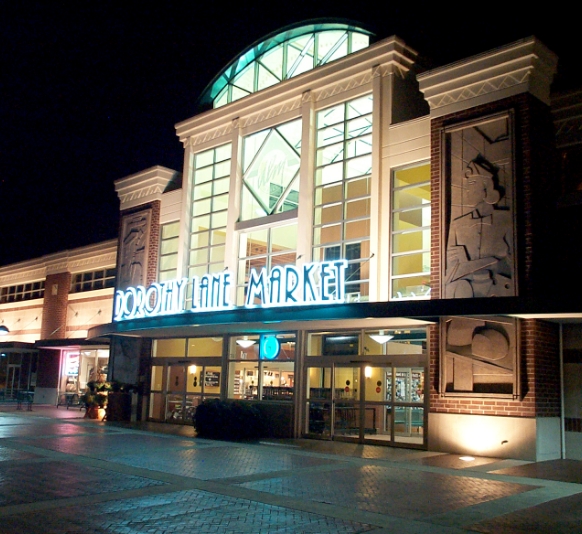
Prime Rib Primer: How to Prepare Prime Rib

- POSTED Dec 7th, 2021
- BY Chef Carrie Walters
This classic holiday roast is graded U.S.D.A. Prime (less than 2% of cattle receive this top grade), earning it a center spot at your table. Lifetime free of antibiotics and hormones, it has a firm texture with fine marbling that melts evenly when cooked. The resulting flavor is juicy and tender—truly something to celebrate.
But with a beautifully classy cut like Prime Rib for your special holiday meal, we understand that nerves may be high when it comes to preparing it, which is why I've pulled together a classic way for how to prepare prime rib as well as a few recipes for serving accompaniments as you set your table with elegance.
Reserve your U.S.D.A. Prime Rib today either in our Meat department or online!

6 PREP & COOKING TIPS
1. ROCK THE CRADLE
Our butchers remove the bones from the raw beef then tie them right back on. This process is called cradling. Why? Roasting the rib with the bones not only provides a built-in rack perfect to roast on, but the bones provide insulation, allowing a slow transference of heat to maximize extra tender and juicy sections. Plus, after the cooked prime rib rests, it'll be easier to carve!
2. SEASON GENEROUSLY
Don't be shy! The day before you plan to cook, season generously with sea salt and DLM Prime Rib Rub. Didn’t plan ahead? You'll still have time to season when you take the roast out of the fridge at least two hours before cooking. The goal is to get it close to room temperature before placing in your oven.
3. ROAST IT SLOW & LOW
With so many methods out there for the perfect prime rib, remember that the higher the temperature, the more the outer layers suffer, resulting in overcooked and grey meat. Roasting slowly at very low temperatures (around 200°F) will prevent this from happening.
4. SEAR AT THE END
By slow roasting then letting the roast properly rest before searing, it yields a much rosier and juicier finished product. When everything is ready, pop it into a hot oven (500°F) to sear for 6–10 minutes. Great for the busy cook and even better for the guests because as soon as you’re ready to eat, you're ready to carve.
5. USE A THERMOMETER
Can’t say it enough—use a good meat thermometer! Regardless of any recipe or advice, a thermometer is the only way to guarantee perfectly cooked meat. I set my probe thermometer at 115°F for perfect medium rare. For medium, pull out of the oven between 120–125°F. Let the roast rest for at least 30 minutes or up to an hour depending on before searing and/or carving, knowing that the roast will continue to rise another 5–10 degrees as it rests (keep reading to learn more about why this is important).
6. LET IT REST
By letting the meat rest, it increases juiciness and overall texture. Carving too soon will result in those delicious meaty juices spilling all over your cutting board and onto your platter. Believe me, you want to have all of it nestled in the roast. Patience will be rewarded!
Comments
Leave a Reply
- Deb
Dorothy Lane Market says:
Hi Deb! Thank you so much for reaching out. We do have U.S.D.A. Prime DLM Natural Beef Standing Rib Roasts available for reservation this year. Please head to DorothyLane.com/RSVP to view cost and reserve yours.
- Brian
Dorothy Lane Market says:
Hi Brian! Thanks for the question. A roasting pan would be best as you want to expose the largest surface area to the heat. We recommend not using a Dutch oven with a lid because it would end up steaming the beef. And for a resting time, we recommend at least 20-30 minutes before carving.
- Kathy
Dorothy Lane Market says:
From the Meat Director: That recipe is for slow cooking at 200 degrees. I don't know that I would cook it at a lower temperature. And it's roughly 15 minutes per lb but that is guessing. That's why it states to use a thermometer to get to the desired temperature you want.
-
ONLINE SHOP
(866) 748-1391 shop@dorothylane.com -
Oakwood
(937) 299-3561- Mon - Sun: 6:00AM - 10:00PM
-
Washington Square
(937) 434-1294- Mon - Sun: 6:00AM - 9:00PM
-
Springboro
(937) 748-6800- Mon - Sun: 6:00AM - 9:00PM
-
COMING SOON: MASON
Craving More?
We'd love to fill your plate with recipes, stories of our food adventures, gift ideas, and news of sale items.
SIGN UP FOR OUR E-NEWSLETTERS






